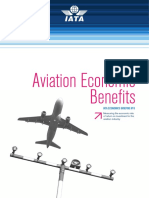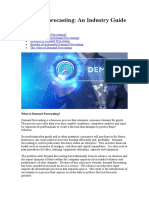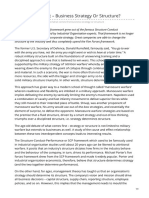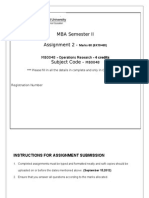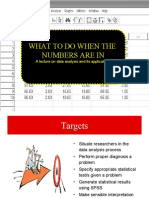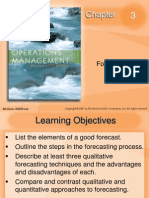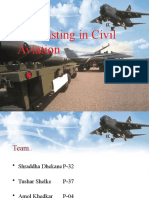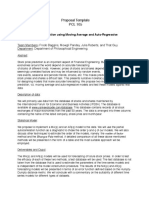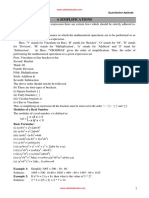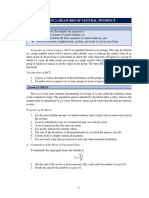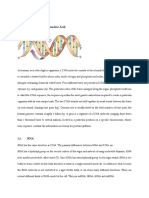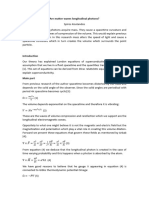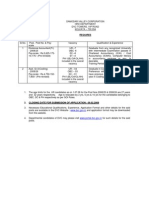0% found this document useful (0 votes)
214 views23 pagesForecasting & Methods: CE G545 Airport Planning and Design
The document discusses various methods for forecasting future demand at airports, which is essential for airport planning and design. It describes aggregate and disaggregate forecasting levels and several common forecasting methods: time series analysis, market share forecasting, econometric modeling, and simulation modeling. Time series analysis extrapolates historical activity trends into the future. Market share forecasting calculates an airport's activity as a share of a larger forecast. Econometric modeling relates activity to influencing variables. Simulation modeling assesses detailed estimates of traffic flows. Judgmental methods like the Delphi technique incorporate expert opinions through iterative surveys.
Uploaded by
Navik BhandariCopyright
© © All Rights Reserved
We take content rights seriously. If you suspect this is your content, claim it here.
Available Formats
Download as PDF, TXT or read online on Scribd
0% found this document useful (0 votes)
214 views23 pagesForecasting & Methods: CE G545 Airport Planning and Design
The document discusses various methods for forecasting future demand at airports, which is essential for airport planning and design. It describes aggregate and disaggregate forecasting levels and several common forecasting methods: time series analysis, market share forecasting, econometric modeling, and simulation modeling. Time series analysis extrapolates historical activity trends into the future. Market share forecasting calculates an airport's activity as a share of a larger forecast. Econometric modeling relates activity to influencing variables. Simulation modeling assesses detailed estimates of traffic flows. Judgmental methods like the Delphi technique incorporate expert opinions through iterative surveys.
Uploaded by
Navik BhandariCopyright
© © All Rights Reserved
We take content rights seriously. If you suspect this is your content, claim it here.
Available Formats
Download as PDF, TXT or read online on Scribd
/ 23


















